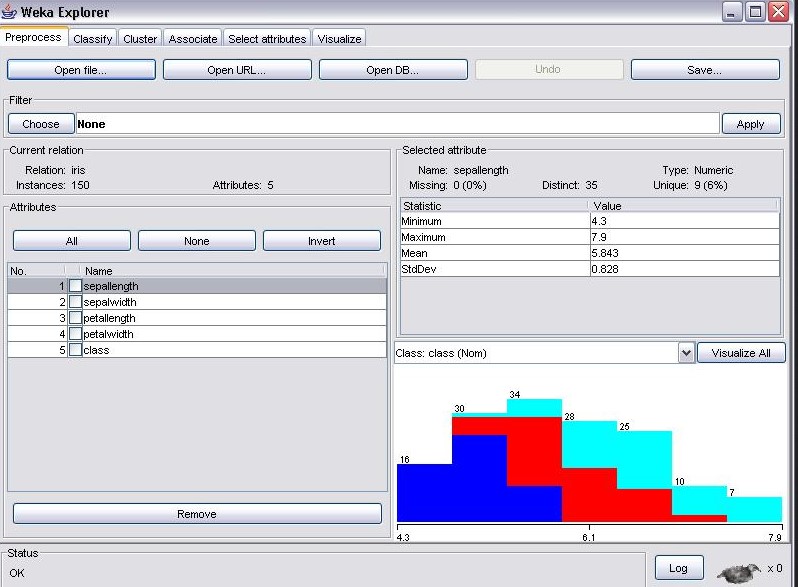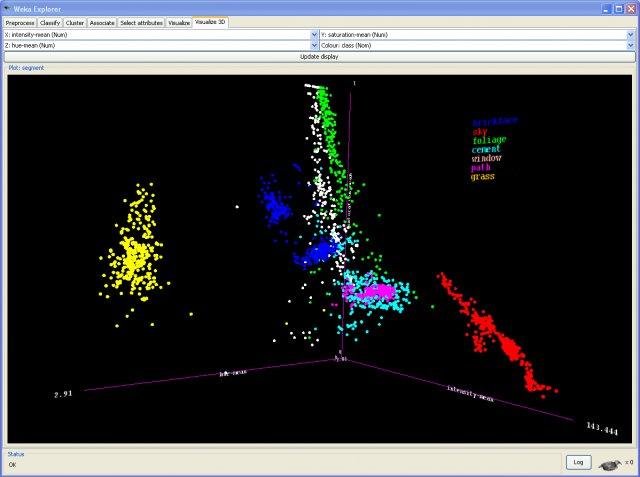Weka3
Read-only mirror of the offical Weka subversion repository (3.8.x). Waikato/weka-3.8. Jan 14, 2021 Weka for Windows PC – Learn how to download and install the Weka 3.9.4 (64-bit) application on your Windows 10/8/7 PC for free. Weka is a collection of machine learning algorithms for data mining tasks. Now, this Developer Tools app by Weka Team is available for Windows XP64 / Vista64 / Windows 7 64 / Windows 8 64 / Windows 10 64. Dec 10, 2020 Last Updated on December 10, 2020. Machine learning is an iterative process rather than a linear process that requires each step to be revisited as more is learned about the problem under investigation. Machine Learning Courses. We have put together several free online courses that teach machine learning and data mining using Weka. The videos for the courses are available on Youtube.
WEKA --- A Starter's Guide
(new version 3.4 installed Jan 22, 2004)
You are about to learn WEKA, a practical machine learning tools package to help you in your following lab assignments. 'WEKA' stands for the Waikato Environment for Knowledge Analysis, which was developed at the University of Waikato in New Zealand. WEKA is extensible and has become a collection of machine learning algorithms for solving real-world data mining problems. It is written in Java and runs on almost every platform.
WEKA is easy to use and to be applied at several different levels. You can access the WEKA class library from your own Java program, and implement new machine learning algorithms.
There are three major implemented schemes in WEKA. (1) Implemented schemes for classification. (2) Implemented schemes for numeric prediction. (3) Implemented 'meta-schemes' .
Besides actual learning schemes, WEKA also contains a large variety of tools that can be used for pre-processing datasets, so that you can focus on your algorithm without considering too much details as reading the data from files, implementing filtering algorithm and providing code to evaluate the results.
We have installed one copy of WEKA package in our CS573 course account. You don't have to install your own copy, and by doing the following steps, you will be able to run it:
1) Log into your CS account.
2) Create a directory called weka using:
> mkdir weka

> cd weka
3) Create a symbolic link to our installed weka pack:
> ln -s /home/course/cs573x/weka-3-4/weka.jar
4) You are able to run weka now:
> java -jar weka.jar
*note: this will only work on Linux or Solaris workstations, as this will run GUI version of WEKA
5) Please make the following two links to enable you to access the source code of weka and some sample datasets.
> ln -s /home/course/cs573x/weka-3-4/weka
> ln -s /home/course/cs573x/weka-3-4/data
The following step is to set the CLASSPATH environment variable prior to use the command line. You need to indicate the location of the weka.jar file.
1) For sh, ksh and bash users:
Championship manager free download mac. Please add 'export CLASSPATH=/home/course/cs573x/weka-3-4/weka.jar:$CLASSPATH' into your shell configuration profile.
2) For csh and tcsh users:
Please add 'setenv CLASSPATH /home/course/cs573x/weka-3-4/weka.jar' into your shell configuration profile.
3) To test if it is set correctly:
Type 'java weka.classifiers.trees.j48.J48 ' (note the change from previous versions, in case you are familiar with any), it should display a list of all learning options for J48. If it displays an exception error message, then you will check if you set the environment variable correctly. Please make sure that you also set the correct path to Java, so that the system can locate and run Java.
Now, the installation is done! You can run WEKA either in command line or in graphic user interface. Remember only in Linux or a Solaris workstation can you run GUI, telnet won't work.
- How to install and run WEKA on your home computer
If you have a home computer and would like to install WEKA by yourself, please check the following:
There are two stable versions of WEKA. Either you can download the self-extraction executable version that includes the Java Virtual Machine 1.4 (weka-3-4jre.exe; 19,543,851 bytes), or the self-extracting executable without Java VM (weka-3-4.exe; 6,467,165 bytes). This new version comes with the GUI, which provides the user with more flexibility than the command line.
After extracting the files, you will need to set your classpath variable to a complete path to weka.jar (suppose you extracted WEKA to C:Weka, then set your classpath variable to C:Wekaweka.jar, ie add 'C:Wekaweka.jar;' to the list of values that environment variable Path can take when working in Windows)
If you don't have administrator privileges, you can still install WEKA. For that, download the jar archive (weka-3-4.jar; 6,322,417 bytes). Make sure that the Java J2SE 1.4 (download from SUN) is installed on your system (which includes the jar utility). Then open a command line console, change into the directory containing weka-3-4.jar, and enter
jar -xvf weka-3-4.jar

This will create a new directory called weka-3-4. To un-jar (install) the source code, position yourself in the recently created weka-3-4 directory and type
jar -xvf weka-src.jar
Which will create a new directory weka containing the source code. Since WEKA is open source software issued under the GNU General Public License, you can use and modify the source code as you like.
NOTE: It seems that Windows will not set up your CLASSPATH properly if any of the WEKA directories contains spaces. Therefore, installing Weka in the Program Files folder is not a good idea.
From your weka-3-4 directory, you will find:
Weka 3.4

- A jarfile containing the classes only
- A jarfile containing the complete source code
- The tutorial and README
- The API documentation
- Some example datasets
It is very helpful to learn more about the structure of WEKA before you use it in your program. You should read the tutorial and README files carefully, and explore the hierarchical API documentation to get familiar with the Packages, Interfaces and Classes. The most detailed and up-to-date information could be found in the online documentation (stable book version or GUI version) on WEKA Web Site. This documentation is an online html-based API documentation generated directly from the source code using the Javadoc utility.
The tutorial is Chapter 8 of the book Data Mining: Practical Machine Learning Tools and Techniques with Java Implementations.From this tutorials, you will learn how to prepare your dataset in ARFF format; how to use filters to preprocess a dataset; how to apply learning scheme to your data set in command line; how to access the classes from your own code, and how to write new learning schemes according to your purpose. It also includes examples and sample codes that you can try to get hands-on experiences.
The Weka Wiki page has a lot of documentation and guides on installation/usage pages.
You can click here to download several tutorial for the experiment environment in the GUI version of Weka (written by David Scuse), and here is a working demonstration of using WEKA Knowledge Explorer.
This page is written by Jun Zhang (updated by Oksana Yakhnenko). If you have any questions or comments about the installation and usage of WEKA, please email: rjordan@cs.iastate.edu
Weka 3.6
